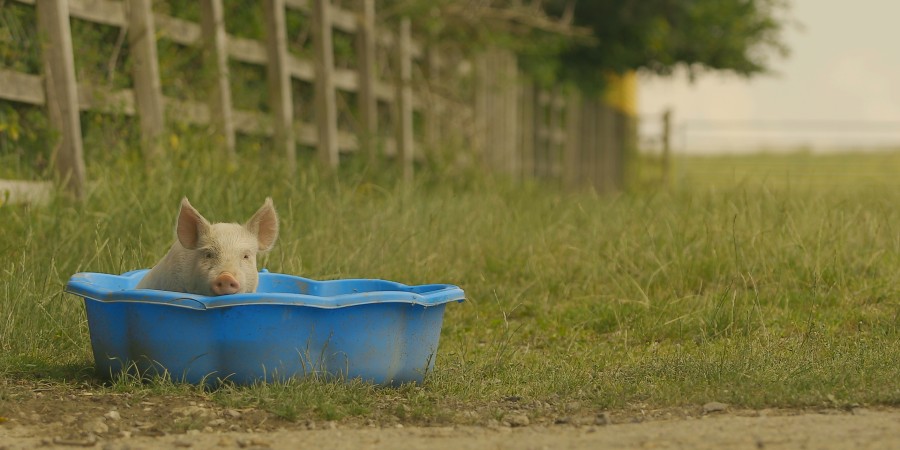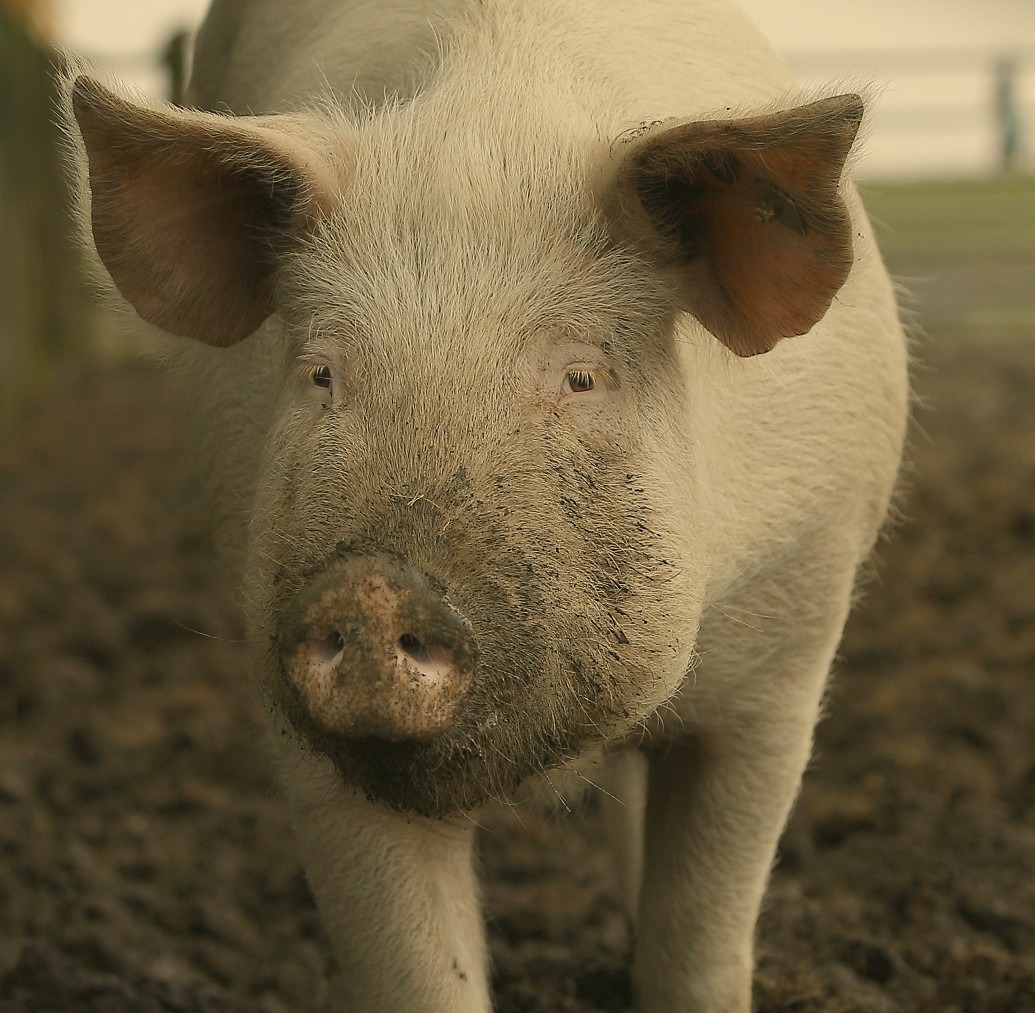Jusep Moreno introduces his feature-length documentary When Pigs Escape, and describes how he came to be a vegan filmmaker
 When Pigs Escape documents the story of Matilda, a pig who escaped from a farm in Nottinghamshire to give birth to ten piglets in nearby woodland. The story made mainstream news, as animal rights activists successfully campaigned for Matilda and her family to be released to a sanctuary.
When Pigs Escape documents the story of Matilda, a pig who escaped from a farm in Nottinghamshire to give birth to ten piglets in nearby woodland. The story made mainstream news, as animal rights activists successfully campaigned for Matilda and her family to be released to a sanctuary.
I’ve been vegan for about six years. Where I come from in Catalonia, there is the tradition of bull running. One of the most popular activities involves a crowd of people pulling a bull through the streets of a town, using ropes which are tied around their horns. One day I was watching the bull running with my friend, and I told him, “I’m not sure I’m enjoying what I’m seeing. I don’t think we should be doing this.” I had this massive sandwich filled with different kinds of meat, and my friend looked at it and said, “You’ll have to be a vegetarian then.”
At the same time, I was very interested in both biology and photography. I was spending a lot of time photographing flamingos in a protected area in Catalonia. I wanted to tell their story because they live in a wetland threatened by sea-level rise. One day I thought – why am I trying to help these animals so much, and not others?
I was lucky that when I decided to go vegan I had the support of my partner and a few relatives.
Becoming a filmmaker
When Pigs Escape is my first feature length documentary. My background is actually in photography. Once I completed my biology degree, I decided I wanted to focus on wildlife photography. After I moved to the UK, I did a Master’s degree in photography. The degree had modules in filmmaking, and I always thought I wasn’t interested in it. It seemed too complicated.
But I increasingly became frustrated with photography. The photos I was sharing on social media weren’t getting the reactions I wanted. When I posted photos of wild rabbits, all I would get was people saying they were cute. There’s room for that, and I can’t resist a cute photo either, but I was trying to have more important conversations about the way we exploit animals. We use rabbits for absolutely everything – for food, experiments, clothing… I naturally transitioned to video because it gave me the opportunity to tell a more rounded story.
Sanctuary volunteering
I volunteer at Brinsley Animal Rescue, which is the sanctuary that first heard the news that a pig had escaped from a farm nearby and given birth in the woods. I had already been filming at the animal rescue – my plan was to document a year in the life of a sanctuary. But when I heard about Matilda, I thought that it was such a powerful story that it stood by itself.
I wanted to make a film about pigs to give people the opportunity to see them in a context where they’re not exploited. Matilda was raised in what you would call a free-range farm in an outdoor enclosure, but she still had, for example, a ring through her nose to prevent her from digging.
This story was so special because Matilda had her piglets with her. In sanctuaries we usually don’t get to see these kinds of interactions because we usually rescue individual animals. Matilda’s story gained a lot of traction in the press – it was international news – and I wanted to amplify her story.
For a while I’ve been interested in the topic of animal resistance, which is about how animals can have the power to show humans that they dislike what we’re doing to them. Matilda’s story reminded me of that concept. It’s a mystery how she escaped, but I think that perhaps she must have somehow got through the farm’s electric fence.
Pure joy
Filming with Matilda and her piglets was just pure joy, and such a privilege for me. It was really helpful that I felt Matilda was very happy with me being around them. Some of the shots I have are very close to the action. But Matilda never seemed stressed – she was always very chatty and very loving. She always knew I was there – I wouldn’t try to be sneaky and to film without her knowing. If she had given me any signs, grunts or sudden movements that she wasn’t happy with me I would have moved, but that never happened.
The piglets were so unpredictable, and they did the weirdest and funniest things. One of the piglets would run through the field and then suddenly roll on their back with their legs facing up.
The first day the piglets went out in the field, they wouldn’t touch the water. They would all gather around Matilda while she was having a mud bath, but they wouldn’t join in. It was lovely to see the piglets become bolder and start to massively enjoy the water. Watching them all having a mud bath together was one of my favourite moments of making the film.
I think the first time people get to see pigs living freely, it destroys all their preconceptions. When you can show how they like being stroked, how they lie down for a belly rub and how chatty they are, it’s one of the most powerful forms of outreach. We’re not telling people what to think, but allowing them to experience the pigs’ personalities. I think that has huge potential for changing views.
Audience reactions
From the start of the filmmaking process, I have never put on my shoulders the pressure of changing people’s minds. All I’m doing is giving them the opportunity to watch the film, and what they do with it is up to them.
Even if the film doesn’t directly make non-vegans go vegan, I’m hoping that it might be a piece of the puzzle. I didn’t want the film to come across as preachy. I just wanted the audience to interact with the pigs, rather than have a human telling them what they should be doing and thinking. It’s a fine line between not being explicit enough, and risking being labeled as propaganda. I think the film makes more of an appeal to our emotions and core values rather than an intellectual argument. That, in my opinion, is probably a better way to engage non-vegans.
Future plans
I definitely want to make more documentaries about non-human animals. I’d like to go back home and film something about bull running. I think I have an interesting perspective, because even though I’m completely against it now, for most of my life I was a spectator. Focusing on such a specific topic would, I think, have more potential to bring about change in the short term.
When Pigs Escape is screening at selected cinemas on 19 November. Buy tickets here, or visit www.whenpigsescape.com to learn more. .
The views expressed by our bloggers are not necessarily the views of The Vegan Society.

